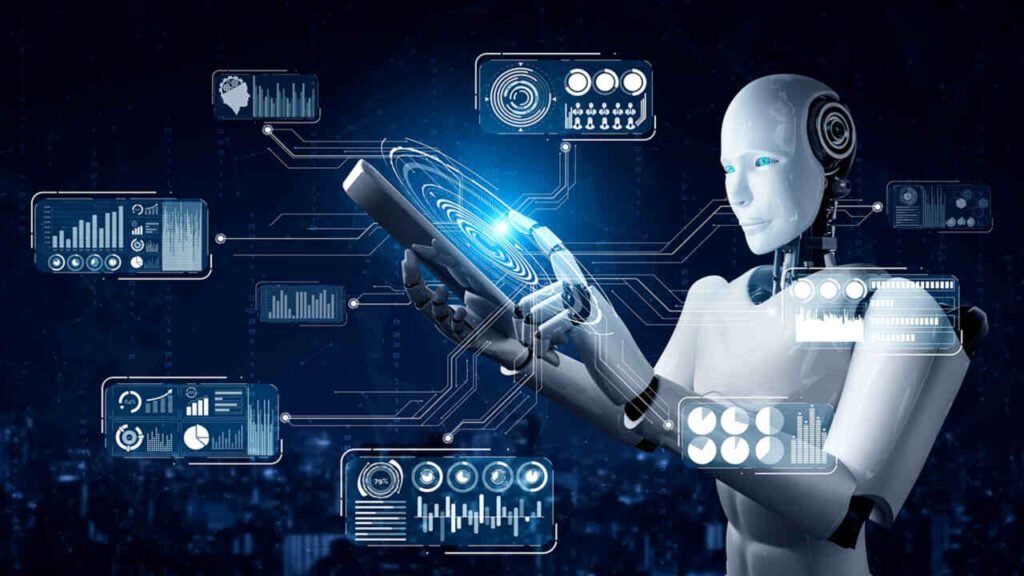The software industry is constantly evolving, driven by technological advancements and changing user demands. Staying up-to-date with the latest software trends is crucial for businesses and developers to remain competitive in the market. In this blog, we will explore the top software trends that are shaping the future, providing you with valuable insights into the ever-changing landscape of software development.
In today’s fast-paced digital landscape, software is at the forefront of innovation, driving transformative changes across industries. From cutting-edge technologies to groundbreaking methodologies, the software industry is constantly evolving, shaping the future of how we live and work. In this comprehensive overview, we will explore the top software trends that are revolutionizing various sectors and paving the way for a more connected and efficient world.
Join us as we delve into the exciting world of software and discover the latest trends that are shaping the future. From artificial intelligence and machine learning to cloud computing and cybersecurity, we will uncover the key developments that are redefining industries and unlocking new possibilities. Get ready to embark on a journey into the world of software innovation and explore the transformative trends that will shape our future endeavors.
Artificial Intelligence
(AI) and Machine Learning (ML):

AI and ML have become integral parts of modern software applications. These technologies enable machines to learn from data and make intelligent decisions. From virtual assistants to chatbots, recommendation systems to image recognition, AI and ML are transforming industries and enhancing user experiences. Incorporating AI and ML capabilities into software solutions can provide businesses with a competitive edge and unlock new possibilities.
Artificial Intelligence (AI) and Machine Learning (ML) are revolutionizing the way we interact with technology and transforming various industries. AI refers to the development of intelligent machines that can simulate human intelligence, while ML focuses on training computer systems to learn and improve from data without being explicitly programmed. These technologies have the power to automate tasks, analyze vast amounts of data, and make accurate predictions, leading to increased efficiency, improved decision-making, and enhanced user experiences. From virtual assistants and chatbots to autonomous vehicles and personalized recommendations, AI and ML are driving innovation and shaping the future of technology.
Internet of Things (IoT):
The Internet of Things has gained significant momentum in recent years. IoT refers to the interconnection of various devices, allowing them to communicate and share data. With the increasing number of connected devices, software developers are tasked with creating robust and secure applications that can handle massive amounts of data. IoT opens up opportunities in sectors such as smart homes, healthcare, logistics, and industrial automation.
Cloud Computing:
Cloud computing has revolutionized the way software is developed, deployed, and accessed. With cloud infrastructure, developers can leverage scalable resources, reducing costs and improving flexibility. Software-as-a-Service (SaaS) solutions are becoming increasingly popular, enabling users to access software applications through the Internet without the need for local installations. Cloud computing also facilitates collaboration and integration among different software systems.
Low-Code and No-Code Development:
Low-code and no-code development platforms have emerged as game-changers in the software industry. These platforms empower users with limited coding knowledge to build applications using visual interfaces and pre-built components. By reducing the dependency on traditional coding, these platforms accelerate the development process and enable rapid prototyping. This trend is democratizing software development and making it accessible to a broader audience.
Cybersecurity and Privacy:

As the digital landscape expands, the importance of cybersecurity and privacy cannot be overstated. Software developers must prioritize building secure applications to protect sensitive data and prevent cyber threats. The growing adoption of regulations like the General Data Protection Regulation (GDPR) has heightened the need for robust security measures. Incorporating encryption, authentication protocols, and regular security audits are crucial steps in ensuring software safety.
Progressive Web Applications (PWAs):
PWAs combine the best of both web and mobile applications, providing a seamless user experience across devices. These applications can be accessed through web browsers and can be installed on users’ devices, eliminating the need for app store downloads. PWAs offer offline functionality, push notifications, and enhanced performance, making them a popular choice for businesses aiming to reach a wider audience.
The software industry is a dynamic and ever-evolving field, with trends shaping the future of software development. Embracing the latest software trends, such as AI and ML, IoT, cloud computing, low-code/no-code development, cybersecurity, and PWAs, can empower businesses and developers to stay ahead of the competition and meet the evolving needs of users. By staying informed about these trends and adapting to change, you can ensure that your software solutions remain relevant, efficient, and user-friendly in this rapidly evolving digital era.
All in all
the software industry is witnessing several prominent trends that are shaping the future of technology. These trends are paving the way for innovative solutions, transforming various sectors, and revolutionizing the way we interact with software.
Firstly, artificial intelligence (AI) and machine learning (ML) are playing a central role in software development. AI-powered applications are becoming more intelligent, enabling advanced data analysis, predictive capabilities, and automation of tasks. ML algorithms are enhancing software capabilities, driving personalized user experiences, and improving efficiency across industries.
Cloud computing is another significant trend that continues to gain momentum. The cloud offers scalable and flexible infrastructure, allowing businesses to store and process vast amounts of data. Cloud-based solutions provide accessibility, cost-effectiveness, and collaboration opportunities, enabling organizations to optimize their operations and deliver services more efficiently.
The Internet of Things (IoT) is connecting an increasing number of devices and objects, resulting in a vast network of interconnected systems. Software development is focusing on creating solutions that leverage IoT capabilities, enabling smart homes, intelligent cities, and seamless integration of technology into everyday life. IoT-driven software is revolutionizing industries such as healthcare, manufacturing, and transportation.
DevOps practices have emerged as an essential approach for software development and delivery. DevOps emphasizes collaboration, continuous integration, and continuous delivery, enabling teams to deliver software faster and more reliably. It promotes automation, scalability, and agility, allowing organizations to respond quickly to changing market needs.
Data security and privacy are becoming paramount in an interconnected world. With the increasing reliance on technology, software developers are placing a significant emphasis on robust security measures. From encryption to secure coding practices, the software is being designed with security in mind to protect sensitive information and mitigate potential risks.
Lastly, user-centric design and user experience (UX) are key considerations in software development. Applications are being designed with a focus on intuitive interfaces, seamless interactions, and personalized experiences. User feedback and data-driven insights are shaping the development process, resulting in software that caters to user needs and preferences.
Overall, the software industry is experiencing a rapid transformation driven by AI, cloud computing, IoT, DevOps, security, and user-centric design. These trends are shaping the future of software, enabling innovation, and revolutionizing various sectors. Embracing these trends will be crucial for organizations to stay competitive, deliver exceptional user experiences, and drive technological advancements in the years to come.
read more: truereviewmagazine.com










